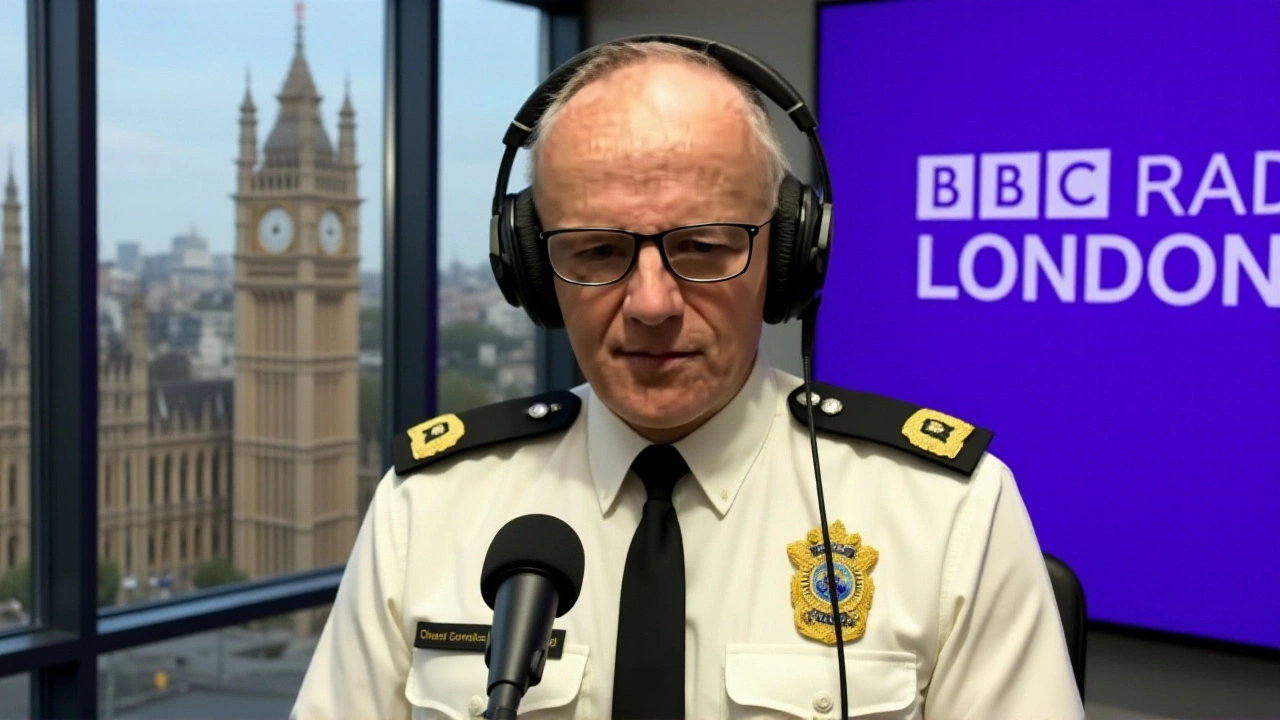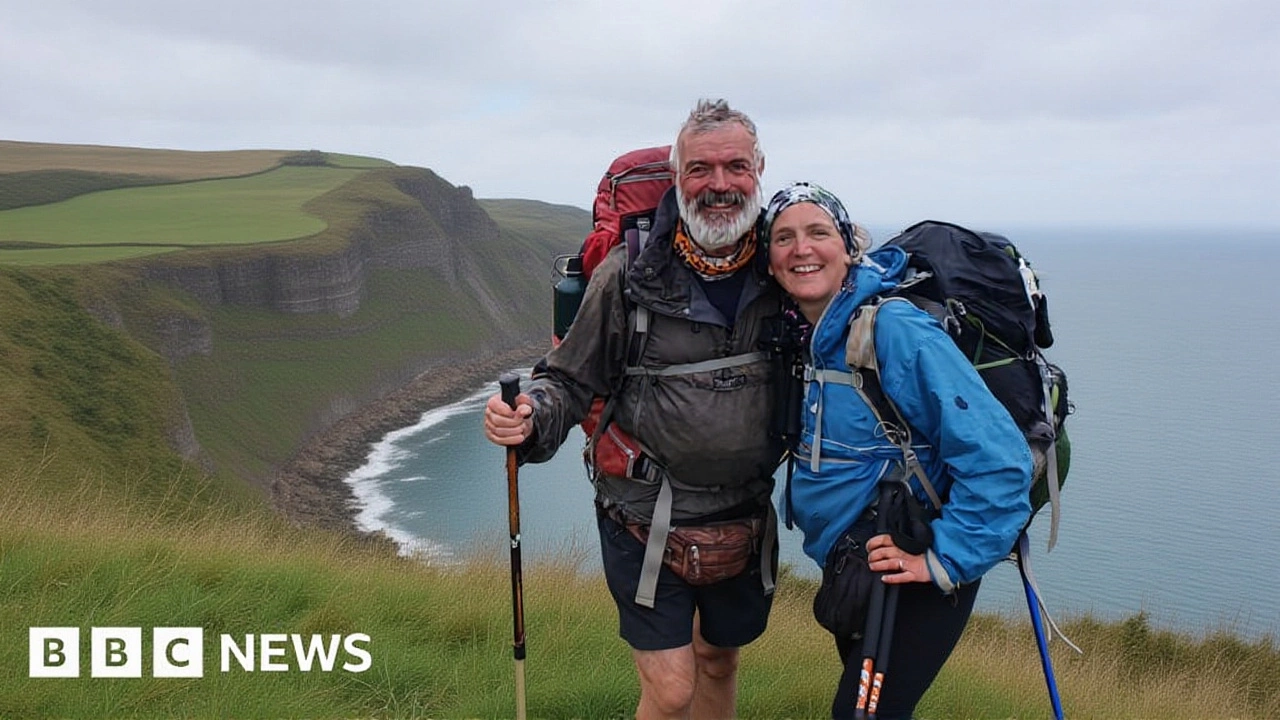When Mike Langley, 73, and Zoe Langley‑Wathen, 54, set off from their home near Ilminster, Somerset, in early October 2025, they weren’t just chasing a personal record – they were launching a two‑year, unsupported coastwalk around the mainland of Great Britain to raise £10,000 for the Dorset & Somerset Air Ambulance (DSAA). The goal? To log between 7,000 and 7,300 miles along a route that hugs cliffs, dunes and bustling ports, all while funding life‑saving helicopter services in their home counties.
Why This Walk Matters: A Brief History of Charitable Long‑Distance treks
Charity walks have long been a staple of British fundraising. In 2014, Sir Ranulph Fiennes completed a 1,500‑mile trek across the Sahara, raising over £1 million for Cancer Research UK. More recently, the 2021 "Walk for the NHS" covered 3,200 miles and netted £4.8 million. The Langley couple’s coastwalk is ambitious by any standard – it rivals the legendary 4,000‑mile “Maine Coastal Trail” challenge that raised $2.3 million for coastal preservation.
What sets this expedition apart is its focus on an emergency service that many Britons take for granted. The DSAA operates three helicopters, responding to roughly 2,400 incidents a year across Dorset and Somerset. Each flight can be the difference between life and death, especially in rural areas where road access is slow.
The Walk Details: Route, Timing and Logistics
Officially dubbed the "Coastwalk for Air Ambulance", the trek began on Coastwalk for Air AmbulanceGreat Britain. Starting at the southern tip near Exeter, the duo will trace the shoreline clockwise, passing iconic sites such as Dover’s White Cliffs, the rugged Shetland coast, and the serene beaches of Pembrokeshire. Their plan allows for seasonal breaks – winter months will see slower progress, while summer offers faster mileage.
At an average of 12‑15 miles per day, they anticipate covering the full distance in roughly 730 days, allowing for rest days, weather delays and the occasional detour inland for supplies. "We’re not carrying a support vehicle," Zoe explained, "so everything we need – a tent, food, a spare pair of boots – has to fit into a 40‑liter rucksack. It’s a test of endurance and simplicity."
Mike added, "The British coast is a living museum. One day we could be walking past a Roman fort, the next we’re hearing seals bark on a cliff. That variety keeps us motivated."
Fundraising Mechanics and Community Response
Donations are being collected through a dedicated GoFundMe page, with every pound earmarked for DSAA’s fleet maintenance and crew training. So far, the campaign has drawn £2,800, spurred by local businesses in Somerset and Dorset offering matching contributions.
When the couple announced the challenge at a town hall meeting in Ilminster on 3 October, the mayor, Councillor Hannah Grace, praised the effort: "Their walk exemplifies the spirit of community service. The air ambulance saves lives daily, and this walk will help keep those helicopters in the sky."
Social media buzz has been strong, with the hashtag #Coastwalk4AirAid trending regionally. A local bakery in Yeovil donated a hundred scones each week, and a seafood restaurant in Cornwall pledged to cover a night’s meals after the couple reaches the westernmost point.

Physical and Mental Challenges: What Lies Ahead
Walking the coastline isn’t just a physical slog; the weather can flip from sunny skies to gale‑force winds in minutes. In November 2023, a similar expedition off the Northumberland coast saw walkers halted by a sudden snowstorm, forcing a 48‑hour shelter stay. "We’ve prepared for extreme conditions – waterproof gear, thermal layers, and a satellite phone for emergencies," Zoe noted.
Nutrition is another puzzle. The pair follows a high‑carb, moderate‑protein diet, resupplying at coastal towns whenever possible. According to sports nutritionist Dr. Alisha Patel, "For endurance walkers over 50, maintaining protein intake is crucial to preserve muscle mass, especially on long treks across varied terrain."
Mentally, the isolation can be taxing. Mike, a former electrician, admits evenings spent alone under a bivvy can feel "like staring at a blank page – you just have to keep writing the story with each step."
Looking Ahead: Impact and Legacy
Beyond the £10,000 target, the couple hopes their story will inspire others to combine personal challenges with charitable causes. If they finish on schedule, the coastwalk will be recorded as one of the longest unsupported walks around the British Isles.
DSAA’s chief pilot, Captain James Harrington, said, "Every pound helps us keep helicopters ready 24/7. Knowing that the community is backing us with such dedication reinforces why we do what we do."
As the Atlantic wind whistles along the cliffs and the footpaths stretch onward, the Langleys’ journey reminds us that simple steps, taken together, can lift an entire region.
Frequently Asked Questions
How will the £10,000 be used by the Dorset & Somerset Air Ambulance?
The funds are earmarked for helicopter fuel, routine maintenance, and specialist training for the DSAA crew. According to the charity’s finance officer, a £10,000 infusion can cover up to 150 flight hours, which translates to dozens of emergency rescues.
What makes this walk different from other charity treks?
It’s an unsupported, two‑year circumnavigation of Great Britain’s coastline – a distance rarely attempted without a support vehicle. The combination of age, the length of the route, and the focus on a regional air ambulance sets it apart.
Can the public contribute in ways other than money?
Yes. Local businesses have offered matching donations, supplies, and lodging. Volunteers can also spread the word on social media using #Coastwalk4AirAid, which helps raise visibility and attract more donors.
What are the biggest risks the walkers face?
Harsh weather, navigation errors on remote headlands, and physical strain are the main concerns. The couple carries a satellite messenger for emergencies and follows a strict schedule to avoid fatigue.
When is the walk expected to finish?
If they maintain their planned pace, the Langleys aim to complete the coastwalk by late 2027, roughly two years after the October 2025 start.

Written by Rupert Greenlow
View all posts by: Rupert Greenlow